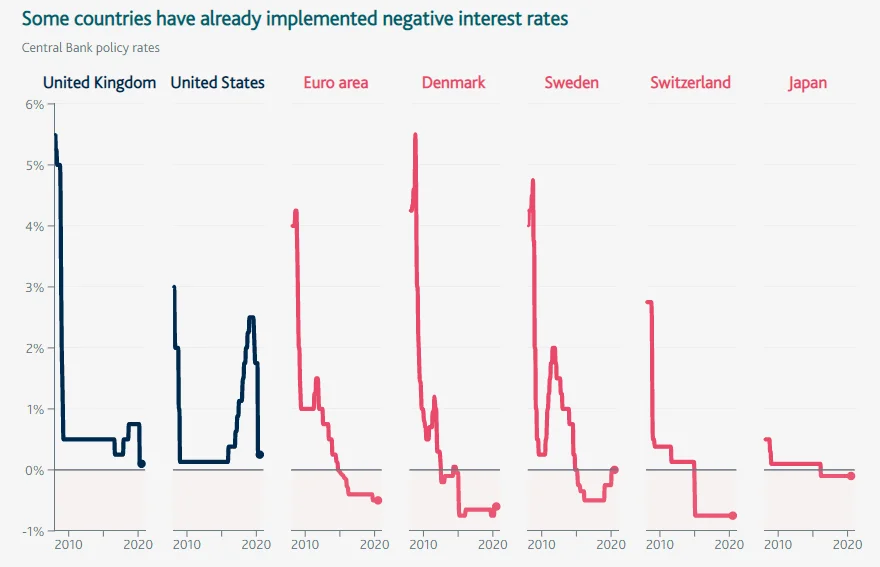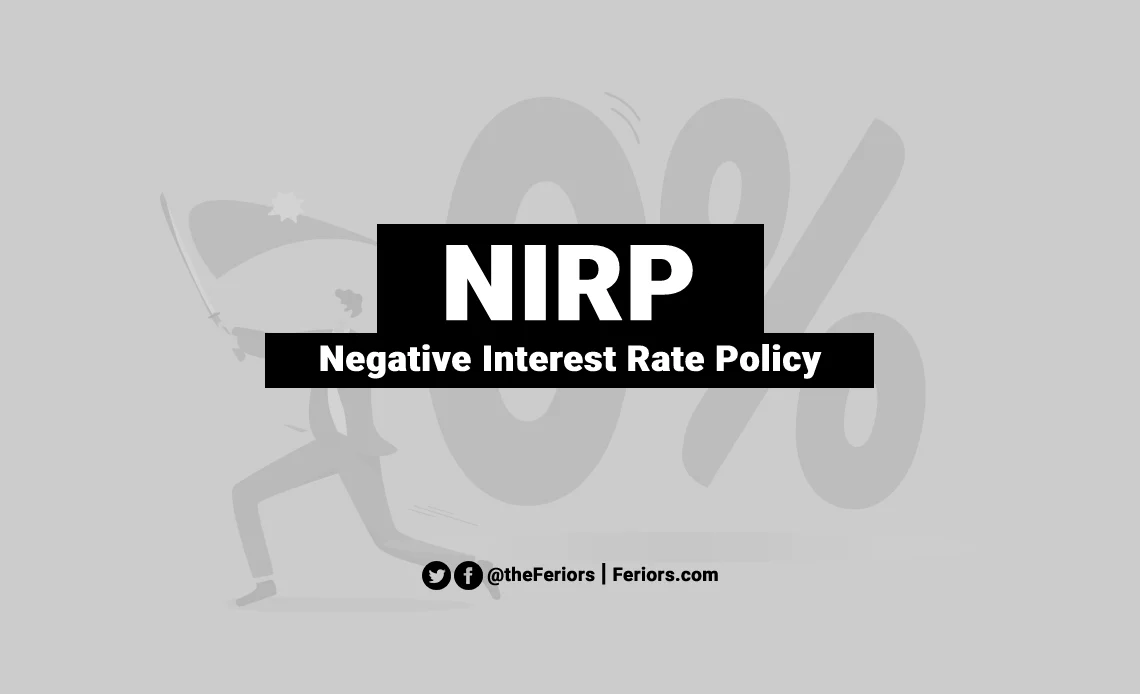What is Negative Interest Rate
Negative interest rate is when an interest rate is below 0 percent, the borrowers receive interest rather than lenders. Under the negative interest rate policy (NIRP), banks and other financial institutions are required to pay interest to deposit excess reserves with the Central Bank. However, individuals do not pay banks to deposit their money.
A negative interest rate policy is seen as a “last resort” monetary policy tool that the central banks implement when the economy is under difficult times. In theory, the negative interest rates aimed to stimulate the economy by encouraging banks to take more risk by lending to businesses and individuals rather than hoarding large amounts of cash at the central bank and paying negative interest.
As an individual, instead of charging depositors interest on deposits, the negative interest rates (and near-zero rates) focused on making it less attractive to deposit cash in banks to encourage them to spend or invest.
Some countries have already implemented a negative interest rate policy. These countries include Denmark (in 2012), Euro Zone (in 2014), Switzerland (in 2014), Sweden (in 2015), and Japan (in 2016).

How does the Negative Interest Rate Work
Deflation is the main problem that leads to the negative interest rate policy, a condition in which people do not want to spend their money because of economic impact. When people do not want to spend, it means that there is no demand for products then the price keeps dropping according to the law of demand while the production costs and interest payment remain the same.
As a result, if the costs of production keep going up and revenue stays the same, companies will have to start cutting back on their production level, stop expanding unnecessarily, and even lay off.
Since 2012, central banks in Denmark, Eurozone, Sweden, Japan, and Switzerland implement negative interest rate policies in response to persistently below-target inflation rates (also known as deflation). The move reflected the central banks’ struggle to boost inflation even though they had already cut the interest rates to zero.
Negative interest rate can boost economic growth by encouraging commercial banks and financial institutions to lend more to businesses and consumers, rather than deposit excess reserves with the Central Bank that they need to pay interest for deposits. This helps companies access capital easier (during a hard time) with a lower interest burden to encourage them to invest more.
However, every coin has two sides. The negative interest rate policy downside are include:
- Fund flows out of the country due to the lower real yield.
- Public savings declined as returns declined.
- Banks and financial institutions will have lower interest revenue.
Frequently Asked Questions
Negative interest rate is when an interest rate is below 0 percent, the borrowers receive interest rather than lenders. Under the negative interest rate policy (NIRP), banks and other financial institutions are required to pay interest to deposit excess reserves with the Central Bank.
Countries that already implemented a negative interest rate policy include Denmark, Euro Zone, Switzerland, Sweden, and Japan.
References: Bank of England, IMF, Federal Reserve



